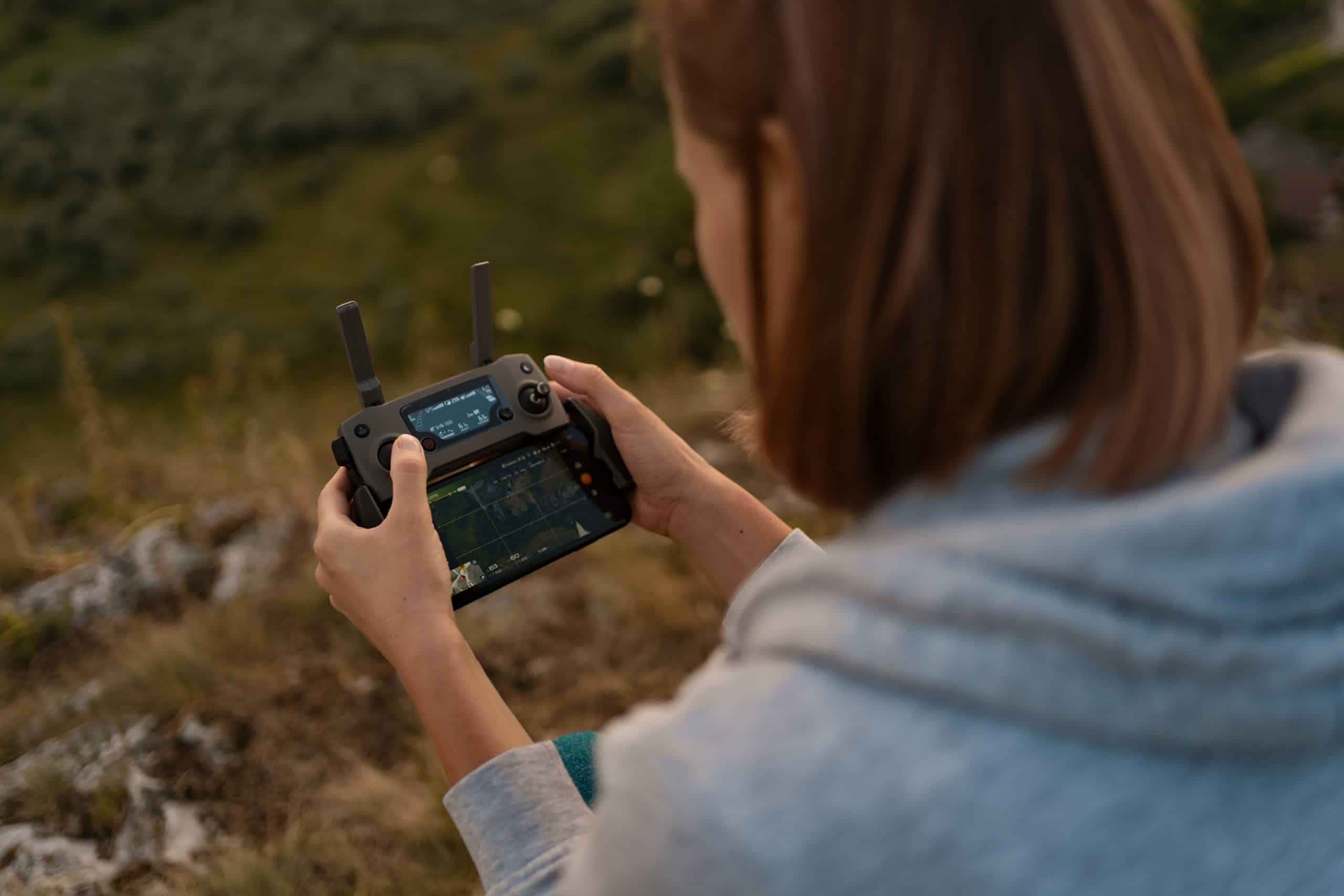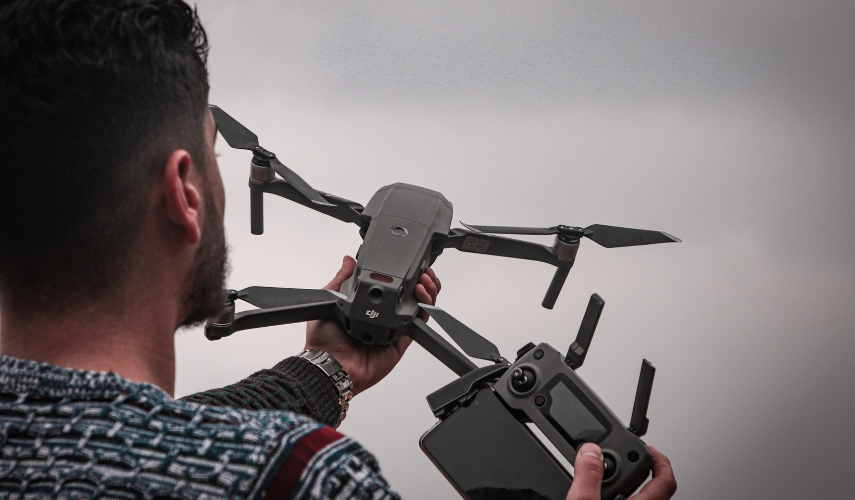From the entry into force of the European UAS Regulations in 2021, the training required to fly a drone is similar in all EU countries. This means that the training you can obtain in Spain will be recognised in other EU countries, such as France, Italy or Portugal.
There are different certifications or types of drone licenses that you can get, so it is important that before flying a drone, you are up to date with the regulations that allow you to fly drones in Spain and in Europe, and to do so, we recommend you to consult the AESA website where you can check everything you need to have before flying your drone, such as the Operator Registration, the Civil Liability Insurance and identification plates for drones.
The AESA website where you can get an overview of the drone sector is: https://www.seguridadaerea.gob.es/en/ambitos/drones.
What is a drone pilot licence?
A drone licence is the certification or accreditation provided by AESA to UAS pilots so that they can operate legally and safely, following all the established parameters to avoid causing accidents or interfering with air traffic.
What is required to obtain a drone pilot licence?
To fly a drone, whether the purpose of your flight is recreational (to merely enjoy piloting) or to carry out aerial work, you must have a minimum amount of mandatory training.
The new European regulation explains that drone operations are categorised according to the risk that the drone operation itself poses to people on the ground nearby. This means that, depending on the Operational Category into which your flight fits, you must have different training to be able to receive the corresponding drone licence.
Although we are going to talk later about all the categories and types of drone pilot licence that you can obtain depending on the operation you are going to carry out, we recommend that, in order to make sure that your flight belongs to one category or another, to consult the AESA and ENAIRE Drones website to find out all the details of your operation. You will then be able to find out which type of drone certification you need to apply for.

The different drone certificates or licences that exist today
The UAS certifications or types of drone licence in Spain are basically classified into 3 categories, which are:
- Drone Pilot Certificate A1-A3
- A2 Drone Certificate
- STS Drone Certificate
Below we give you more details of each of the types of drone licenses you can get, according to the classification described above and their respective fields of action.
Remot Pilot Certificate or Drone License A1-A3
The A1-A3 drone pilot certificate is mandatory for all those who want to fly a drone, from the most basic to the most complex.
Which drones can be flown with A1 A3?
This A1 A3 UAS certificate allows you to fly drones up to 500 grams Maximum Take-Off Weight (MTOW) in Open Category A1.
From January 2024, this certificate will also allow you to fly drones with Class C1 Label in the same Category. In addition, it not only includes the benefits of Open Operational Category A1, but also Open Category A3, so you will be able to fly drones up to 25kg in this operational category, and from 2024, drones of any class label, as long as you are in Category A3.
This A1-A3 certificate is a theoretical exam type test that is done in AESA, based on a syllabus that the State Aviation Safety Agency publishes.
A2 Remote Pilot Certificate or A2 Drone License
This UAS certificate will allow you to fly in Open Category A2. To obtain this drone pilot certificate you must complete two parts, the first, theoretical in AESA, a test type exam, and on the other hand, a self-practical part, in which you must practice a series of manoeuvres in a controlled environment and evaluate yourself to confirm that you are qualified.
What drones can fly with A2?
With this certificate you will be able to fly drones up to 2kg in weight, and from 2024, drones with a Class C2 label.
STS Remote Pilot Certificate or STS Drone Pilot License
This drone certificate, the most difficult, but the highest level, allows you to fly under Specific Category, within the Standard Scenarios that are currently published (STS-ES-01 and STS-ES-02).

Which drones can be flown with an STS certificate?
With this professional drone licence you can fly a drone weighing up to 10kg in urban areas and VLOS (Visual Line of Sight) under the STS-ES-01 standard scenario and up to 25kg in BVLOS (Beyond Line of Sight) under the STS-ES-02 standard scenario. From January 2024, you will be able to fly drones with Class C5 and C6 Label respectively for each Scenario. It will consist of a test part to be carried out at AESA, and a practical part to be carried out at a Training Entity recognised by AESA.
How to obtain a drone licence from AESA?
To obtain an AESA drone licence, you need to check which level of the State Aviation Safety Agency’s training scheme your UAS is at. For more details about each corresponding drone pilot certificate according to that classification, we invite you to enter our blog article dedicated to how to get a drone licence, where we explain everything you need to know to get a drone pilot licence.
From UMILES we recommend you to obtain all the certificates to be able to fly in any possible scenario and above all, it is very important that you know the limitations of each operational category (Open, Specific), so that you know what type of flight you are going to do, the limitations, and more importantly, if you have the necessary qualifications to operate in those conditions.
How much does it cost to get a drone pilot licence?
Certification prices will depend on the number of requirements that need to be met. For example, in the case of drones with MTOW of less than 250g, the pilot can register for free on the AESA electronic platform, and that will be enough to fly the drone.
However, in cases where it is necessary to take a professional drone pilot course or training to obtain STS certifications, you will have to pay the price corresponding to each of the modules in which you want to specialise.
Below are some indicative references:
- Drone pilot certificate A1-A3: The price of the theoretical exam and the issuance of the certificate by AESA is usually around 200-300 euros. In addition, you may have to invest in study material or preparation for the exam.
- A2 drone pilot certificate: For this certificate, the price can be similar to the A1-A3 certificate, as it also involves a theoretical exam and the issuance of the certificate by AESA. In addition, you may need to invest in the practical part of the training by taking a course like the ones we offer at UMILES University.
- STS drone pilot certificate: This certificate, being of a higher level and requiring more specialised training, may have a higher price. In addition to the theoretical exam, you will need to complete practical training at an AESA-recognised entity, such as UMILES University.
What does it take to become a drone pilot?
To become a drone pilot, you need to meet certain requirements and follow a training and certification process. The steps are as followed:
- Undertake theoretical training: You must complete a theoretical training course that covers the knowledge necessary to operate a drone safely and legally. This training covers topics such as aviation regulations, drone-specific regulations, meteorology, flight principles, navigation and safety.
- Pass the theoretical exam: After receiving the theoretical training, you must pass a theoretical exam administered by the relevant civil aviation authority in your country, such as the Spanish State Aviation Safety Agency (AESA) in Spain. The exam will test your knowledge of the theoretical aspects related to drones and their operation.
- Take a course with real drone practice: In addition to theoretical training, some drone pilot certificates require practical training. This involves acquiring piloting skills through supervised flight practice in a controlled environment. During this stage, you will learn how to control the drone, perform basic manoeuvres and become proficient in different flying situations.
Once you have completed these steps and obtained your drone flying certificate, you will be able to operate legally in multiple situations.
